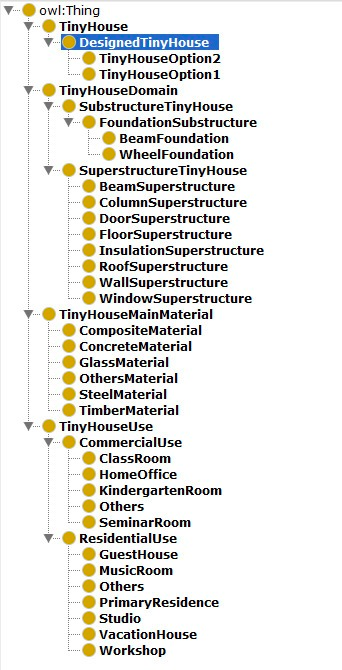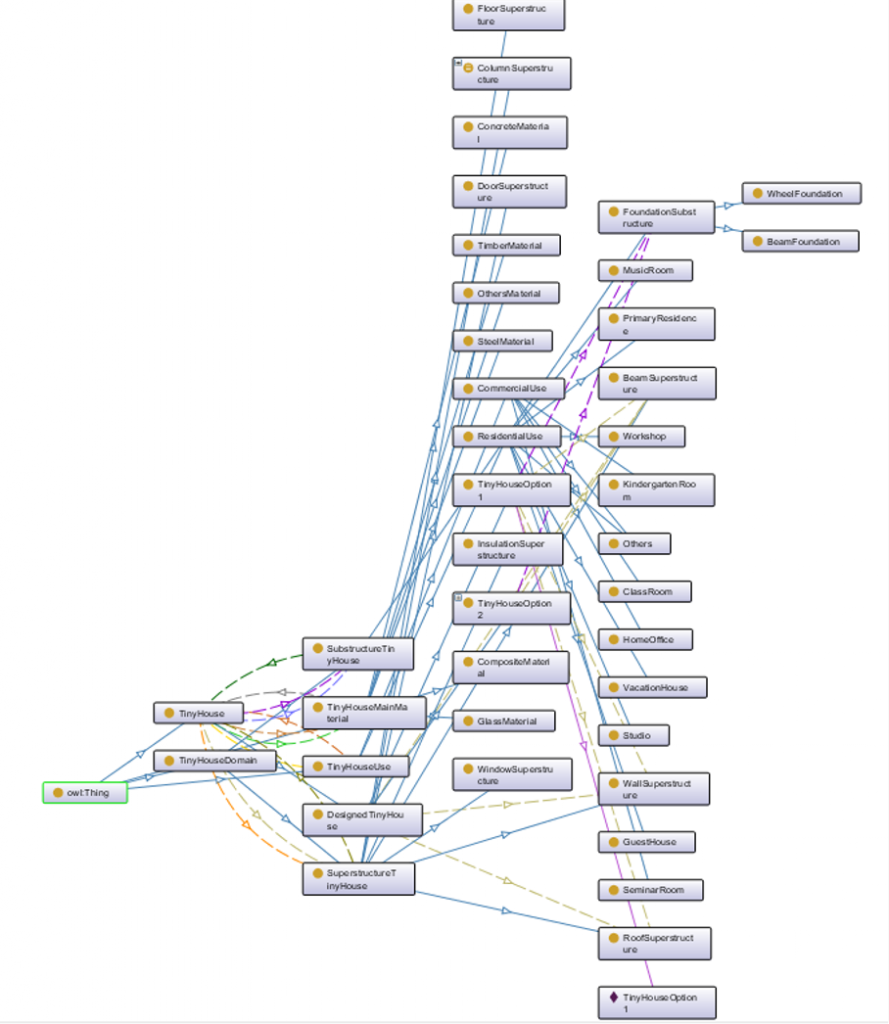Introduction
The first step when starting to develop an ontology for the domain Tiny House is to clarify the domain and scope of this work. To do this, (Noy & McGuinness, 2001) suggest answering some questions as described below.
- What is the purpose?
This ontology has been created to provide the essential concepts required for the conceptual design of tiny houses, with a focus on structural engineering. - What is the scope?
This ontology covers the nuances of tiny house design and includes key concepts such as physical components, potential materials, and different applications of tiny houses and their relations. - Who are the intended end-users?
The intended end-users are architects and engineers who are actively involved in the design process of tiny houses. - What is the intended use?
The ontology is strategically designed to function as a knowledge representation tool, supporting the creation of parametric models tailored for the unique realm of tiny houses. As a knowledge representation of the domain, the ontology can help designers create new designs by considering all components and their relationships as described in the ontology.
Class Hierarchy
The next step in ontology development involves structuring classes and their hierarchy. Therefore I used the Software Protégé. The classes TinyHouse, TinyHouseDomain, TinyHouseMainMaterial, and TinyHouseUse were created as disjoint classes. Further subclasses were then defined for each of these classes. For example, subclasses such as TimberMaterial or SteelMaterial were created for the TinyHouseMainMaterial class. The final modeling is presented in Figure 1.

Ontograf
In the Software Protégé, the plug-in OntoGraf is used to visualize the ontology. After the consideration of classes, hierarchy, and their relations as the examples in form of axioms described a visualization of the ontology for the Tiny House is presented in Figure 2.

Engineering Examples
To demonstrate the practical application of the Tiny House ontology, consider the following engineering examples:
1. Designing a Sustainable Tiny House on Wheels
Scenario: A design team is tasked with creating an eco-friendly Tiny House on Wheels. The ontology guides the team in selecting suitable materials, understanding structural components, and ensuring the design aligns with residential functions and environmental goals.
Use Case: The ontology facilitates exploration of materials like sustainable timber, efficient insulation methods, and innovative structural configurations for a mobile Tiny House.
2. Adapting a Tiny House for Commercial Use
Scenario: A company aims to repurpose a Tiny House for commercial use as a mobile office. The ontology supports architects in identifying modifications needed for the Tiny House to function as a practical and comfortable workspace.
Use Case: By utilizing the ontology, the design team can assess necessary structural alterations, incorporate appropriate materials, and ensure compliance with zoning regulations for commercial use.
3. Innovative Tiny House Designs for Educational Spaces
Scenario: An educational institution plans to introduce Tiny Houses as alternative learning spaces. The ontology aids architects in conceptualizing designs that cater to diverse educational needs.
Use Case: The ontology provides insights into creating modular Tiny House classrooms, considering materials conducive to a learning environment, and understanding the structural adjustments needed.
References
Noy, N., & McGuinness, D. (2001). Ontology Development 101: A Guide to Creating Your First Ontology. Stanford, CA: Stanford University